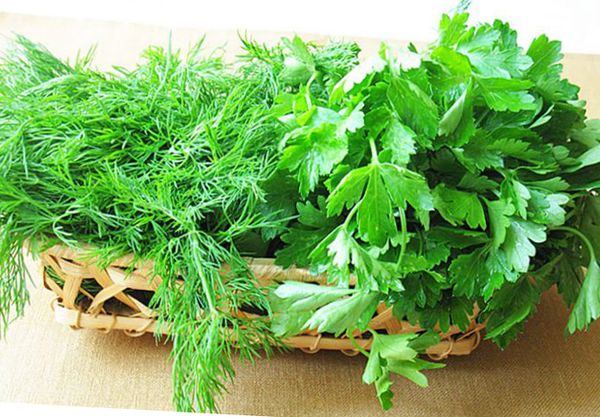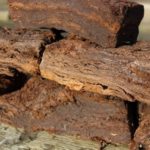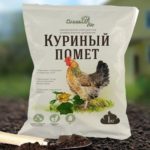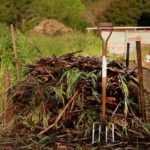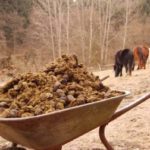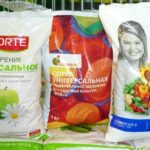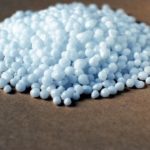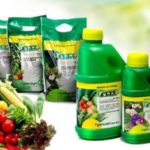Spring and summer seasons are the right time to stock up on minerals and vitamins for the winter. A lot of various useful substances are found in greens, and especially in parsley and dill. For a rich harvest, like other vegetable crops, it is necessary to feed and provide good care on time and in good quality.
Table of contents
Fertilizers for parsley and dill

Therefore, fertilizers that feed this green should not contain dangerous impurities. Fertilizers are:
Organic
This is river silt, sawdust wood, guano birds, compost, peat, manure.
Pros:
- fertilizers are saturated with microelements, as well as potassium, phosphorus and nitrogen;
- ecologically safe for parsley itself and the environment;
- are available.
Minuses:
- price;
- a small amount of nutrients;
- manure can bring diseases and weed seeds.
- Peat
- Chicken litter
- Compost
- Manure
Simple mineral
They contain one nutrient: potassium sulfate, urea, potassium chloride, ammonium nitrate, simple and double superphosphates.
Pros:
- inexpensive;
- practical to use;
- is available.
Minuses: - no useful chemical elements;
- can damage the soil;
- nitrogen is quickly washed away by rain and irrigation;
- excess can make parsley unsuitable for nutrition.
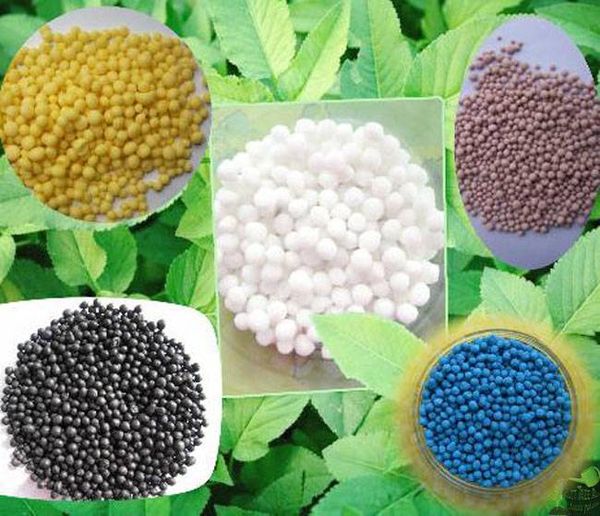
Complex mineral
Contain two or more useful items. Such fertilizers include nitrophos, nitroammofosk, potassium nitrate, ammophos, nitrophoska, diammophos.
Pros:
- Parsley extracts several nutrients at once.
Minuses: - bad impact on the soil and the environment;
- price;
- the plant does not always have enough nutrients in the fertilizer.
Humic
They contain both organic and mineral fertilizers, as well as substances that help to grow.
Pros:
- nutrients are washed out of the ground for quite a long time;
- the large presence of feeding elements allows using much less fertilizer as compared to others;
- suitable for many plants
- they operate throughout the season, evenly supplying nutrients to the roots of plants.
Minuses: - are expensive.
- Complex mineral fertilizers
- Special fertilizers
- Humic fertilizers
Special
They differ from humic ones by the variety of proportions of nutrients in the composition, which allows choosing a suitable fertilizer for each plant.
Pros:
- convenient to choose for a particular plant;
- saturated with various nutrients;
Minuses: - sometimes producers raise the price purely for the brand, and not for the quality of the goods;
- the composition may cause suspicion, because manufacturers themselves decide in what proportions to put certain substances;
- costly, since for each plant will have to buy a separate fertilizer.
How to feed ammonium nitrate
Ammonium nitrate or otherwise ammonium nitrate is a simple mineral fertilizer that helps a plant build its cells and develop actively. It is very common both among farmers and ordinary gardeners. It is produced in the form of small white granules.
Why is it popular?
- Long retains its properties. During storage increases the ability to absorb moisture.
- Universal for all types of plants.
- Suitable for various soil types.
- Restores nitrogen deficiency in soil composition.
- Not only feeds the plant itself, but also protects it from various types of diseases.
- Used for the prevention and strengthening of plant immunity.

Types of ammonium nitrate:
- Simple - more often used in farms. It is sometimes replaced with urea.
- "Indian" or ammonium-potash - for fruit trees.
- "Norwegian" or lime-ammonium - in the composition additionally contains magnesium, calcium and potassium, but its granules are treated with fuel oil, which damages the soil.
- Ammoniac (grade B) - has first and second grade, it can often be found on the shelves of gardening stores. Buy in order to feed the flowers after the winter period and seedlings.
- Magnesium - it is added to saturate the poor soil with magnesium.
Peculiarities of feeding
In the seedbed fertilizer to pay attention to the soil. If the land is depleted - 35-50 g of ammonium nitrate per square meter. m. If the soil is already cultivated, it is enough only from 20 to 30 g per square meter. Top dressing at emergence of shoots: 10 g per 1 sq.m. Repeat in two weeks: 5-6 g per 1 square. Next, ammonium nitrate is added only after the branches are cut.
Adding superphosphates in the spring
Superphosphate is a complex phosphorus-nitrogen compound, which due to its high content of phosphorus and trace elements, helps the roots, the stem of the plant, its leaves to grow, and also provides protection against various diseases.
Types of superphosphate:
- Simple - about 40% calcium sulfate, 10% sulfur, 8% nitrogen and 25% phosphorus. Sold in the form of powder and granules.
- Double - 45-55% concentration of phosphorus, sulfur 6%, and nitrogen - 17%. Granules for dissolving in water.
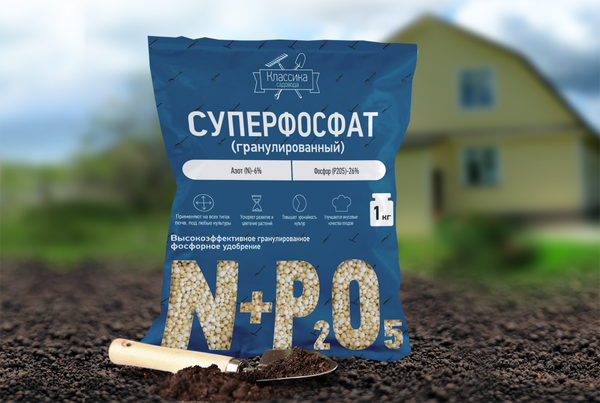
Application.
Simple superphosphate. Before planting greens and add this fertilizer, you need to take care of the soil deoxidation. Thanks to him, this feeding will retain its beneficial properties for a long time. Next, parsley is fed with simple superphosphate only if the greens are cut.
Double superphosphate
This type of superphosphate should be added to the soil in late autumn, when the crop is already harvested, or in the spring season, but early. This allows phosphorus to be absorbed into the soil.
Before planting greens, from 20 to 40 g of top dressing per 1 square meter is added to the ground. m The amount depends on how rich in nutrients the earth is.
Next, superphosphate is added: if the seeds are planted, then after the first shoots appear, if the seedlings are in two weeks. Total need from 8 to 10 grams per 1 square. m

Potassium salt
Potassium salt is a simple mineral fertilizer consisting of sylvinite, kainit and potassium chloride, where potassium is about 40%.
How is potassium useful?
- Improves plant immunity.
- Protects against various diseases.
- Increases resistance to cold.
- Increases the ability to conserve moisture during droughts.
- Takes an active part in cell construction, photosynthesis and protein synthesis.
- It helps the plants to retain their healthy and palatability even after harvesting.
Use of potassium salt.
Before planting, saturate the ground with potassium salt - about 20 grams of nutrient per 1 square meter. After parsley can be fed only if it is grown to obtain root crops.

Nettle feed
Nettle is a perennial flower grass, on the stems of which there are burning hairs.
The benefits of nettle as a fertilizer:
- Protects plants from insect pests and diseases.
- Thanks to her, herbs used as spices can enhance their flavor.
- Saturated with vitamins and trace elements that provide good nutrition of plants.
- Heals the soil.
- Suitable for almost all plants except peas, garlic, beans and onions.
Nettle Fertilizer Recipe
Infusion. Collect only young shoots on which there are no seeds, put them in a large container, filling it about half. Cover with water, but not up to the top, cover tightly and wait a few weeks. The resulting dark liquid, in which there are no bubbles, is diluted with water 1 to 10 and poured over greens.

Also, this infusion can be sprayed parsley, but diluted with water already 1 to 20.Parsley - quite unpretentious plant, with proper care capable of giving a good harvest the entire summer season. In order not to ruin the greens when feeding, it is important to know:
- As far as the soil is already saturated with various nutrients.
- As far as the plant is able to absorb nutrients.
- As far as at least there will be more crop of parsley when adding fertilizer.
- Follow all instructions clearly.
And the most important thing: it is better not to give additional feeding than to overdo it. In the first case, the greens will have slightly less nutrients than usual, and in the second it can harm not only human health, but also the environment.
